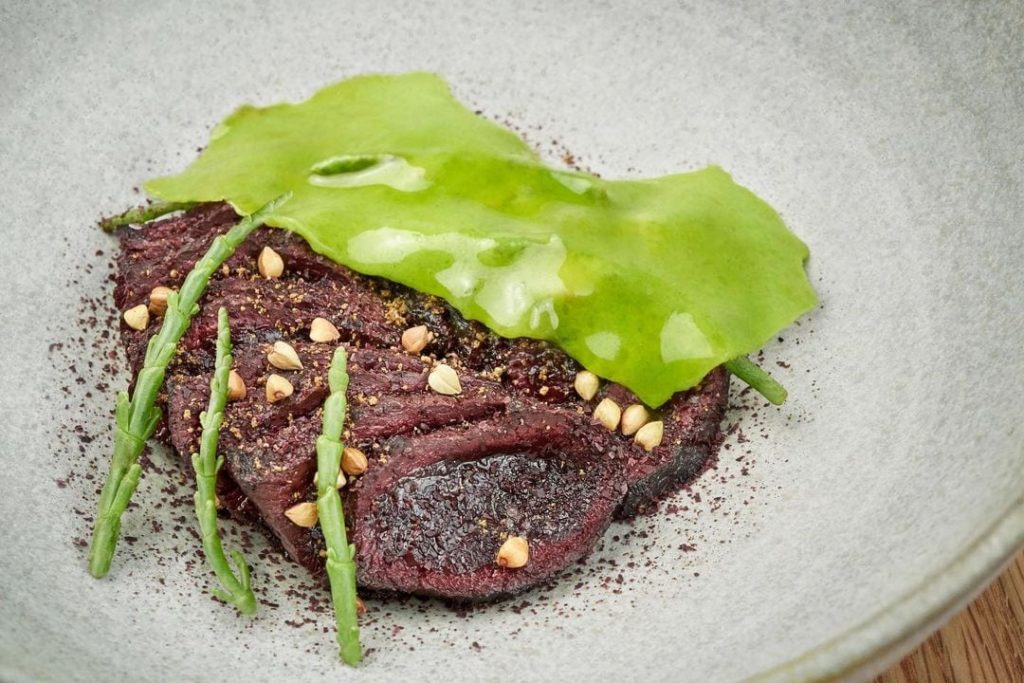Tips For Cooking Seal Meat
Are you uncertain how to prepare seal? Do you wonder what it tastes like? We’re here to offer a few tips to get you started on this marvellous culinary adventure.
- Increases energy
- Strengthens muscles
- Promotes red blood cell formation
- Boosts immune system
- Repairs body tissues
- Improves muscle function
Shop

- Increases energy
- Strengthens muscles
- Promotes red blood cell formation
- Boosts immune system
- Repairs body tissues
- Improves muscle function
Shop
Seal Meat Tips
Rich in protein, full of vital minerals, and low in fat, seal meat is an excellent addition to any diet. But trying a new food can be intimidating. Are you uncertain how to prepare seal? Do you wonder what it tastes like? Not sure how or where to buy it? We’re here to offer a few tips to get you started on this marvellous culinary adventure.
First, be familiar with the different cuts of seal meat available, and what method of cooking is best for each.

Young seal loin
Young seal loin, for example, is delicate, mild, and ideal for barely cooked recipes such as tataki. Both young and adult seal loin, in fact, are best seared and cooked no more than medium-rare. This will ensure your final product is moist and tender.

Seal flippers
Seal flippers may strike you as a bit complicated—but they’re not. Suited to slow cooking, braising, and confits, seal flipper meat will become fall-off-the-bone tender over time, perfect for pies, stews, soups, and pulled seal dishes.
Seal Loin Cooking Tips
A few general guidelines to get your started working with seal loin:
- Buy from a reputable source. Seal meat cuts should be generally free of visible fat, and a deep dark red.
- Remove meat from the refrigerator 20 to 30 minutes before cooking to bring it to room temperature and allow it to cook more evenly.
- Go light on the seasoning, especially salt. Seal meat is often processed using clean ocean water, giving the meat a natural, bright salty flavour. You may not need to add additional seasoning.
- For loins: sear the meat one to two minutes on each side, depending on thickness. The internal temperature must reach between 56˚C and 68˚C.
- After cooking, tent the meat with aluminum foil and allow it to rest for several minutes. This will ensure it is moist, tender, and juicy.
- And finally: let your creativity and preferences be your guide! Experiment by replacing beef with seal in your favorite recipes. Try seal tartare or tataki. Treat seal loin as you would a fine steak. Check out our seal meat recipes to get started!
Seal Flipper Cooking Tips
Seal flippers are excellent in stew, braised or confit and is perfect for pulled meat.
- Season the flipper and sear it each side using olive oil. Add butter to finish the coloring of the meat.
- Fry the vegetables. Add garlic, thyme, maple syrup.
- Reduce the heat by half and add the cranberries.
- Pour the veal stock. Cover.
- Bake at 280-300 °F for 5-8 hours depending on the size of the flipper.
- Make sure to add stock on top of the meat to prevent the meat from drying out.
- Check the cooking, the meat must be pulled easily from the bone.
- Remove the flipper and reduce braising liquid in a pan to reach the perfect consistency.
- Spoon the sauce over the meat.
Downhome Life and SeaDNA propose delicious braised flipper recipes.
But what does it taste like?
Although seals live in the sea, they are mammals and the meat is more akin to game like moose or deer than fish. High-quality seal meat, prepared properly, has no fishy taste at all.
Todd Perrin of Mallard Cottage in St. John’s says seal meat has “got a taste of the sea, with the richness of dark game meat.” Eric Pateman, of Edible Canada Bistro on Granville Island, Vancouver, describes seal meat as “ahi-tuna mixed with moose.” The texture, depending on the cut, can be similar to duck, beef filet, or veal.
Ready to give it a whirl? We have compiled a list of places to purchase seal meat, as well as restaurants known to have seal on the menu, at least seasonally.
Pure Omega-3 Oil
Seal oil is a complete source of Omega-3 (DPA + DHA + EPA) with optimized absorption given its mammalian molecular structure.
Seal Oil
Unique Natural Fur & Leather
Seal fur and leather is a very versatile textile used in multiple applications such as accessories, footwear, outerwear and home decor.
Seal Fur & Leather
Wild Canadian Meat
Seal meat represents an excellent source of protein and is high in iron, zinc, magnesium and vitamin B-12. This wild game meat is free from antibiotics and added hormones.
Seal Meat